Thymic Protein: Function, Structure, and Clinical Insights
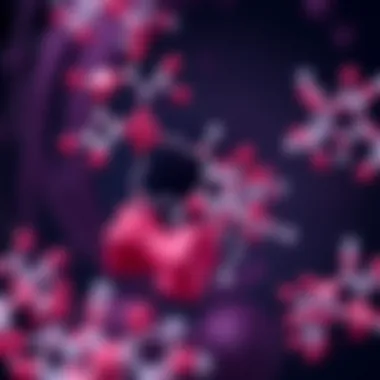

Intro
The thymus is more than just an organ; it plays a critical role in our immune system. Central to this function are various proteins, often referred to as thymic proteins. They are involved in crucial processes such as the development of thymocytes, which eventually mature into T cells, essential for our body's defense against pathogens. Understanding thymic proteins involves delving into their structure, function, and potential implications for health and disease.
In this article, we will unravel the complex nature of these proteins, looking closely at how they support immune responses, interact with other cellular components, and influence various health conditions. The exploration spans from the microscopic level of cellular interactions to broader clinical implications, proving the relevance of thymic proteins in both normal physiology and pathophysiological conditions.
By shedding light on the multifaceted roles of thymic proteins, we aim to equip students, researchers, educators, and professionals with a more nuanced understanding of immunology, guiding future work in this critical field. Let’s embark on this exploration together.
Prologue to Thymic Protein
Thymic proteins play a crucial role in the immune system, especially as they pertain to the development and maturation of T cells. Understanding the workings of these proteins is not just an academic exercise; it carries substantial implications for health and disease.
The thymus gland, often termed the central organ of the immune system, is where T cells undergo differentiation. This small, encapsulated structure nestled just behind the sternum is essential for producing a competent immune response. As we venture into this topic, we aim to shed light on various aspects of thymic proteins, including their functions, structural characteristics, and clinical applications. This exploration contributes to a broader understanding of both immunology and potential therapeutic avenues.
Overview of the Thymus
The thymus is often underappreciated yet critical to the immune system's architecture. Unlike other organs, it is most prominent during childhood and begins to shrink after puberty, a process known as thymic involution. This decline raises interesting questions about age-related immunity. The thymus functions as a training ground for thymocytes—precursors to T cells—which learn to differentiate self from non-self. This process is vital for maintaining the immune homeostasis and preventing autoimmune disorders.
In this intricate environment, various types of cells interact. Notably, the thymic epithelial cells and dendritic cells contribute significantly to shaping the T cell repertoire. This interplay underscores the importance of the thymus not just as an organ but as a complex ecosystem crucial for effective immune defense.
Definition and Types of Thymic Proteins
Thymic proteins are a diverse group of molecules crucial for the development of T cells. They include a variety of cytokines, chemokines, and more complex proteins involved in cellular signaling and maturation processes. Among the most studied are thymosin alpha 1 and thymopoietin, each playing unique roles.
- Thymosin Alpha 1: Primarily involved in the differentiation of T cells, this protein enhances the immune response and has shown promise in therapeutic applications.
- Thymopoietin: Critical for T cell development, it influences the migration and maturation of thymocytes into functional T cells.
Research continuously expands to identify novel thymic proteins and their functionalities, thereby enabling a more straightforward classification. This foundation invites exploration into how these proteins interact with other components of the immune system to facilitate a robust immune response.
Thymic proteins are not merely biological markers; they represent potential therapeutic targets in treating autoimmune diseases and immunodeficiencies. Investigating their roles, interactions, and clinical implications is essential for unearthing new strategies in immunotherapy.
As we navigate through the intricacies of thymic proteins throughout this article, we'll uncover their biological significance, structural peculiarities, and the promising future they hold in clinical settings.
Biological Importance of Thymic Proteins
Thymic proteins play an indispensable role in maintaining a functional immune system, acting chiefly as architects of T cell development and regulators of immune responses. Without these proteins, the delicate balance of immune function could teeter, leading to a host of disorders. Their multifaceted nature underscores not only their biological significance but also their potential clinical implications.
Role in T Cell Development
Thymic proteins are fundamental to the development of T cells, which are pivotal in adaptive immunity. It’s within the thymus that immature T cells, or thymocytes, undergo a rigorous maturation process, assisted by various thymic proteins. Each protein serves a distinct function, guiding progenitor cells through stages of differentiation, selection, and expansion.
During T cell development, proteins such as thymosin beta 4, a crucial component, promote cell proliferation and differentiation. This protein helps in shaping the T cell receptor repertoire, determining how these cells will recognize antigens. This process can be likened to a factory floor where each worker has a designated task, ensuring that the final product – functional, mature T cells – is produced efficiently.


Furthermore, proteins like thymulin play a role in signaling, helping thymocytes understand which path to take during their maturation.
Relying on a complex interplay between these proteins enhances not just the number of T cells produced, but also their functionality. An effective pool of T cells is crucial for recognizing and responding to pathogens, thus maintaining homeostasis in the body. A decline or dysfunction in thymic protein levels can result in insufficient T cell development, leading to compromised immunity.
Influence on Immune Responses
Beyond their role in T cell development, thymic proteins are also instrumental in influencing broader immune responses. They serve as both facilitators and regulators of immune activity, ensuring that the immune system is equipped to respond appropriately.
For instance, certain thymic proteins contribute to the selection process of T cells, determining which cells are capable of recognizing self versus non-self antigens. This selection is critical for preventing autoimmune diseases, where the body’s immune system mistakenly attacks its own tissues.
The complex interplay of thymic proteins helps to enforce tolerance, essentially educating the immune system to distinguish between harmless substances and harmful pathogens. An optimal level of these proteins ensures a balanced immune response, preventing overreactions or under-responses during infections.
"Thymic proteins are not just components of immune architecture. They are the very custodians ensuring that our immune responses are neither overzealous nor lax."
On a practical level, disturbances in thymic protein signaling can lead to immunological disorders. For example, in conditions where thymic hormone secretion is compromised, a notable reduction in immune resilience can occur, making the individual more susceptible to infections and the development of autoimmune disorders.
Structural Characteristics
Understanding the structural characteristics of thymic proteins is essential because these features directly influence their functionality within the immune system. The intricate design of these proteins plays a pivotal role not only in T cell development but also in the body's ability to mount effective immune responses. Without a comprehensive grasp of their structure, we risk underestimating their importance in both health and disease.
Protein Composition and Interaction
Thymic proteins are primarily composed of various polypeptides, which fold into specific three-dimensional structures. This composition is not just a matter of vanity; the arrangement affects how these proteins interact with other molecules. For instance, thymosin beta-4 and thymopoietin are notable for their unique amino acid sequences and structural configurations that enable them to facilitate the development of T cells effectively.
One of the most crucial interactions occurs between thymic proteins and thymocytes, the precursors to T cells. These proteins guide thymocytes through a series of maturation steps, helping them differentiate into fully functional T lymphocytes. Moreover, differences in protein composition can lead to varying immunogenic potentials, which could have significant implications for vaccine development.
Key Elements of Protein Interaction
- Binding Affinity: High specificity in binding ensures that thymic proteins interact precisely with target cells or antigens.
- Conformational Changes: Some proteins change shape upon binding to another molecule, enhancing their functional capabilities.
- Complex Formation: Thymic proteins often form complexes with other proteins, amplifying their effects on immune signaling pathways.
The complexity of these interactions illuminates why even minor changes in structure can lead to substantial changes in function. Such insights reinforce the importance of detailed structural analysis in the context of immunology.
Structural Biology of Thymic Proteins
The field of structural biology opens the door to understanding how the arrangements and folding of thymic proteins can influence their roles. Advanced techniques such as X-ray crystallography and nuclear magnetic resonance (NMR) spectroscopy have provided invaluable insights into the conformations of these proteins. Such structural details reveal how certain proteins, like thymosin and thymic hormone, orchestrate the dance of cell signaling and immune responses.
The secondary and tertiary structures of thymic proteins often dictate their stability and functionality. For example, the presence of alpha-helix and beta-sheet patterns can indicate regions responsible for interactions with other cellular components. This knowledge is essential for designing drugs or therapies targeting these proteins, as alterations in protein structure may affect their therapeutic potential.
By understanding the structural nuances of thymic proteins, scientists can manipulate these molecules for therapeutic benefit, particularly in autoimmune diseases and immunodeficiencies.
As we delve deeper into the structural characteristics of thymic proteins, we acknowledge that these elements are the cornerstone of their functions. This deeper understanding not only paves the way for innovative therapeutic approaches but also enhances our knowledge of immune system intricacies. The exploration of these interactions and structures positions us closer to harnessing thymic proteins for clinical benefits.
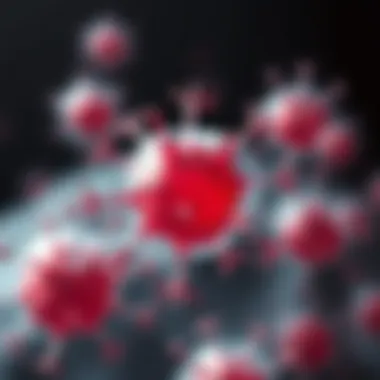
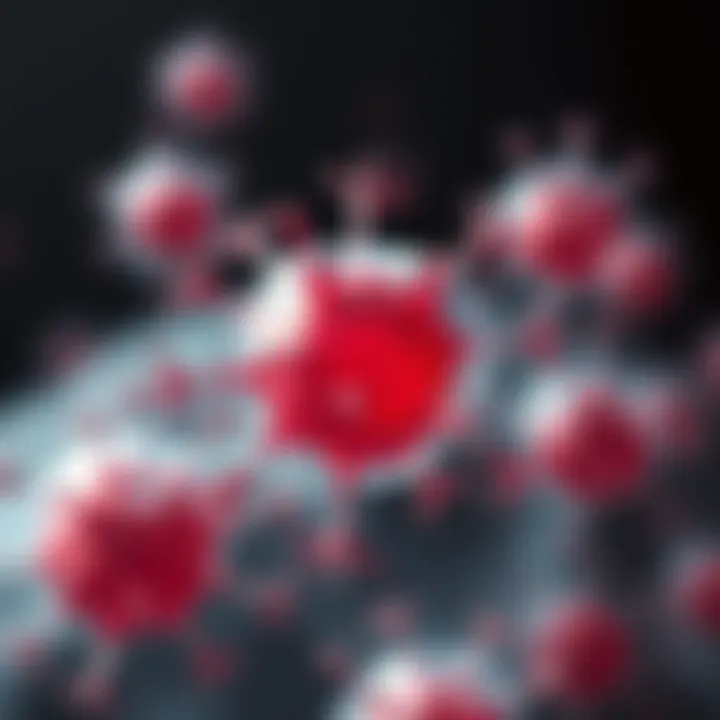
Thymic Proteins in Autoimmune Disorders
The exploration of thymic proteins in autoimmune disorders is vital for multiple reasons. The immune system, designed to protect the body from pathogens, sometimes goes awry, mistakenly attacking the very tissues it should defend. This misstep often can be linked to deficiencies or malfunctions in immune regulation, where thymic proteins come into the picture. As key players in T cell maturation and development, these proteins are interwoven into the fabric of autoimmune responses. Their actions or deficiencies can lead to various autoimmune conditions, from rheumatoid arthritis to Type 1 diabetes.
Mechanisms of Autoimmunity
Autoimmunity arises when the body’s immune system identifies self-antigens as foreign. Thymic proteins play a crucial role in maintaining the balance between tolerance and immunity. Here’s how:
- Thymocyte Selection: In the thymus, developing T cells (or thymocytes) undergo rigorous selection processes. These processes determine whether they mature into functional cells capable of properly responding to foreign invaders or become inactive due to self-reactivity. Thymic proteins facilitate the positive and negative selection of these cells.
- Cytokine Production: Thymic proteins are involved in the production and signaling of various cytokines, which are essential for T cell differentiation. An imbalance can redefine immune responses, leading to excessive inflammation or a diminished tolerance to self-antigens.
- Antigen Presentation: The process of antigen presenting by thymic epithelial cells, supported by thymic proteins, can also deviate immune responses towards auto-reactivity. When autoantigens are presented, if the signaling is not regulated, it can trigger autoimmune phenomena.
Understanding these mechanisms provides insights into how alterations in thymic protein function might lead to or exacerbate autoimmune diseases. Thus, it is critical for scientists and clinicians to further investigate these pathways.
Clinical Observations
Clinical observations involving thymic proteins in autoimmune disorders reveal various patterns that hint at their potent influence:
- Correlation with Specific Autoimmune Diseases: Some studies show that variations in levels or activity of thymic proteins correlate with diseases like systemic lupus erythematosus and multiple sclerosis. Patients with these conditions often display abnormal thymic protein profiles.
- Thymectomy Outcomes: By examining outcomes from thymectomy—surgery to remove the thymus—researchers noted diminished symptoms in some autoimmune patients. This could suggest a direct relationship between thymic proteins and the autoimmunity scale.
- Biomarker Potential: Research is ongoing into the potential of thymic proteins as biomarkers for diagnosing autoimmune conditions. Abnormal levels may predict disease onset or relapse, providing invaluable information for patient management.
"The relationship between thymic proteins and autoimmunity is not just a scientific curiosity; it holds potential for new therapeutic strategies and diagnostic tools that could change lives."
For further reading, consider checking these resources:
Thymic Proteins in Immunodeficiencies
The examination of thymic proteins in immunodeficiencies is crucial for understanding their role in immune system functionality and the associated diseases. Immune deficiencies arise when the immune system cannot defend the body effectively, leading to increased susceptibility to infections and other diseases. The thymus, a specialized organ where T cells mature, is integral to the immune response. Thymic proteins, such as thymosin and thymopoietin, are vital for supporting T cell development, making their role especially important in both primary and secondary immunodeficiencies.
Types of Immunodeficiencies
Immunodeficiencies can broadly be classified into two categories:
- Primary Immunodeficiencies: These are caused by genetic defects, resulting in inadequate immune cell production or function. One notable example is Severe Combined Immunodeficiency (SCID), where T cells and B cells are absent or dysfunctional due to mutations impacting development in the thymus.
- Secondary Immunodeficiencies: These are acquired and can arise from various factors, including infections (as seen in HIV/AIDS), malnutrition, environmental toxins, or medical treatments like chemotherapy. In these cases, thymic proteins may not function optimally, thus reducing the maturation and proliferation of T cells even if the thymus is structurally intact.
It's important to note that the consequences of these immunodeficiencies can vary greatly. Some individuals may experience minimal issues, while others can face life-threatening infections due to their body’s inability to respond adequately.
Role of Thymic Proteins in Disease Susceptibility
Thymic proteins play a pivotal role in shaping the immune landscape. They are not just background players; their intricate functions can directly influence an individual's susceptibility to various diseases. Here's how thymic proteins contribute to disease susceptibility:
- Promotion of T Cell Development: Thymosin, a peptide derived from the thymus, is crucial for T cell differentiation. Insufficient levels of this protein can lead to inadequate T cell numbers, thus impairing immune responses against pathogens.
- Regulating Immune Responses: Thymic proteins are involved in maintaining immune balance. An imbalance may trigger overactive responses, leading to autoimmune diseases, or underactive responses, resulting in immunodeficiency, opening the door to opportunistic infections.
- Clinical Implications: Understanding the specifics of how thymic proteins operate can pave the way for new therapies. For instance, enhancing thymic function or supplementing with thymic proteins may help those with secondary deficiencies restore their immune competence.
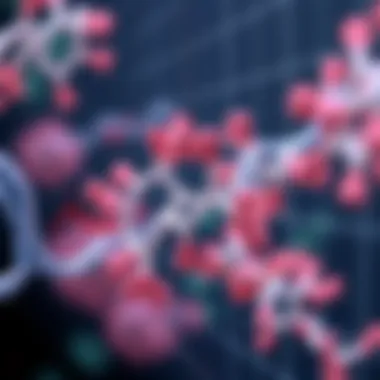
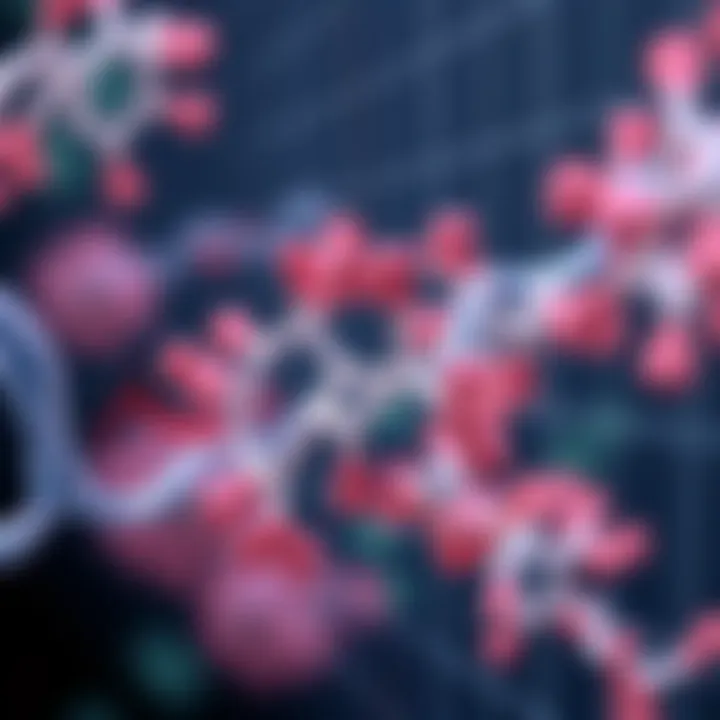
Improving our grasp on thymic proteins not only enhances basic immunology knowledge but also has considerable implications for therapeutic strategies and treatment outcomes.
As we delve deeper into the roles of these proteins, ongoing research continues to shed light on innovative therapies that fine-tune thymic function, ultimately aiming to bolster immune health in those affected by immunodeficiencies. Understanding the nuanced functions of these proteins adds a significant layer to our comprehension of immune system dynamics.
Therapeutic Potential of Thymic Proteins
The therapeutic potential of thymic proteins presents an exciting frontier in immunology and clinical practice. These proteins play pivotal roles in T cell development and functionality, suggesting they could lead to innovative treatments for various immune-related diseases. Understanding their therapeutic implications opens new doors for researchers and clinicians alike. Here, we’ll dive into some specific elements and considerations that make thymic proteins particularly intriguing in the realm of therapeutic applications.
Innovative Therapies in Immunology
Thymic proteins have generated interest for their potential use in innovative therapies aimed at restoring immune function. For instance, thymosin alpha-1, a peptide derived from thymic protein, has been the subject of much research. It has shown promise in enhancing T cell activity, which can be vital for patients suffering from immunodeficiencies or chronic infections.
- Cancer Treatment: One area of burgeoning research involves the modulation of the immune response to treat cancer. Thymic proteins could act as immunological boosters, activating T cells to target and destroy tumor cells more effectively.
- Vaccine Development: There’s also potential in utilizing thymic proteins to enhance vaccine efficacy. By fortifying the immune response through recruitment and activation of T cells, thymic proteins could make vaccines more effective against various pathogens.
- Autoimmune Diseases: Interestingly, thymic proteins might also help in preventing autoimmunity by promoting the development of regulatory T cells, which play a crucial role in maintaining immune tolerance.
As these therapies progress, it's essential to evaluate factors such as dosage, potential side effects, and the specific patient population most likely to benefit from these interventions.
Future Directions in Research
Looking ahead, research into thymic proteins remains at the cutting edge of immunology. Several compelling paths indicate where the field might be headed:
- Personalized Medicine: As we learn more about individual variations in immune response, incorporating thymic protein therapies into personalized medicine could lead to tailored treatments that are more effective and with fewer adverse effects.
- Combination Therapies: Integrating thymic proteins with other immunomodulatory agents could amplify their efficacy, especially in complex diseases. Researchers are exploring various combinations that could leverage the strengths of different treatments.
- Understanding Mechanisms: Continued studies focused on the molecular pathways influenced by thymic proteins can lead to high-level insights. Understanding these mechanisms can aid in developing new therapeutics and improving existing ones.
"Exploring the potential of thymic proteins is not just about developing new treatments; it's about changing the way we understand and combat diseases of the immune system."
For more detailed discussions on specific proteins and ongoing research, consider exploring resources through PubMed or the National Institute of Health.
Culmination
The exploration of thymic proteins underscores their critical role in the immune system. Their influence extends across various biological processes, particularly in the development and maturation of T cells. As we've seen, thymic proteins facilitate signaling and regulatory functions that are paramount for an adept immune response.
Summary of Findings
In summary, the findings expounded throughout this article reveal several important truths about thymic proteins:
- Key Functions: Thymic proteins are influential in shaping T cell development, proving essential from the early stages of thymocyte maturation to their ultimate role in immune surveillance.
- Mechanism of Action: These proteins are involved in complex interactions that ensure T cells can effectively discriminate between self and non-self antigens, thus preventing autoimmune responses.
- Clinical Relevance: Their significance catapults them into the spotlight when dealing with autoimmune disorders and immunodeficiencies; understanding these proteins could lead to novel therapeutic strategies.
Overall, thymic proteins are not just participants in the immune landscape—they are foundational players affecting health outcomes. Given their profound impact, recognizing and manipulating their functions could revolutionize our approach to immunological diseases.
Implications for Future Research
Looking ahead, the implications of thymic protein research are vast and noteworthy:
- Enhanced Therapeutics: There is great potential for developing targeted therapies that leverage the properties of thymic proteins, possibly leading to better management of autoimmune diseases and more effective immunotherapies.
- Understanding Disease Mechanisms: Future research can delve deeper into the pathways involving thymic proteins, illuminating specific mechanisms behind immune dysregulation and disease susceptibility.
- Broader Applications: Thymic proteins might play roles beyond known diseases, warranting exploration in other contexts, like cancer immunotherapy or transplant rejection.
To advance the understanding of thymic proteins, interdisciplinary efforts combining immunology, molecular biology, and clinical applications will be crucial. With continued research, we can hope for groundbreaking advancements in our grasp of immunity and disease management.
By synthesizing these insights, we stand to gain not only a better grasp of basic immunological processes but also practical avenues for enhancing health outcomes. This exploration into thymic proteins opens the door to a future where immunological diseases may be managed more effectively, fostering resilience in patients.















